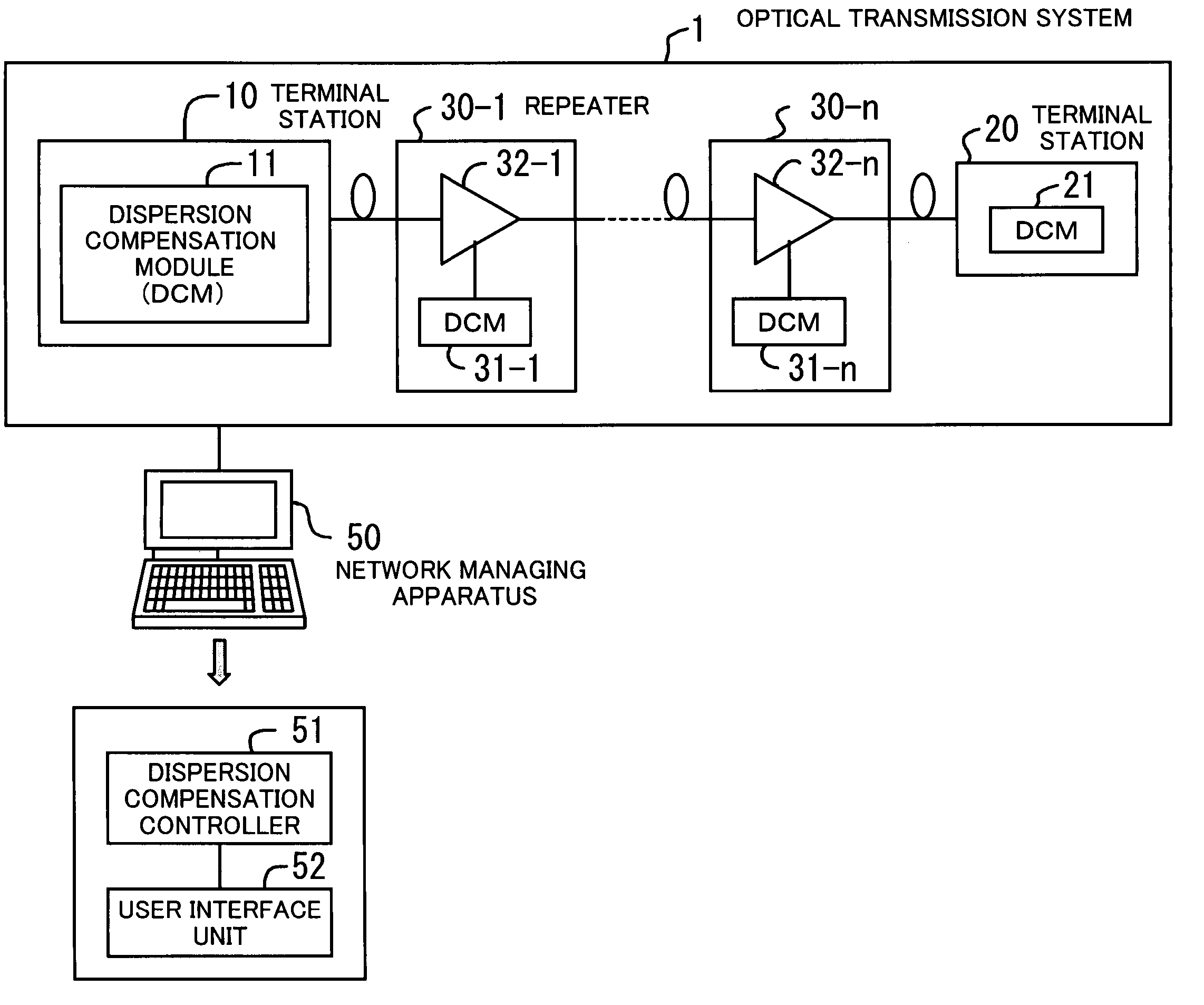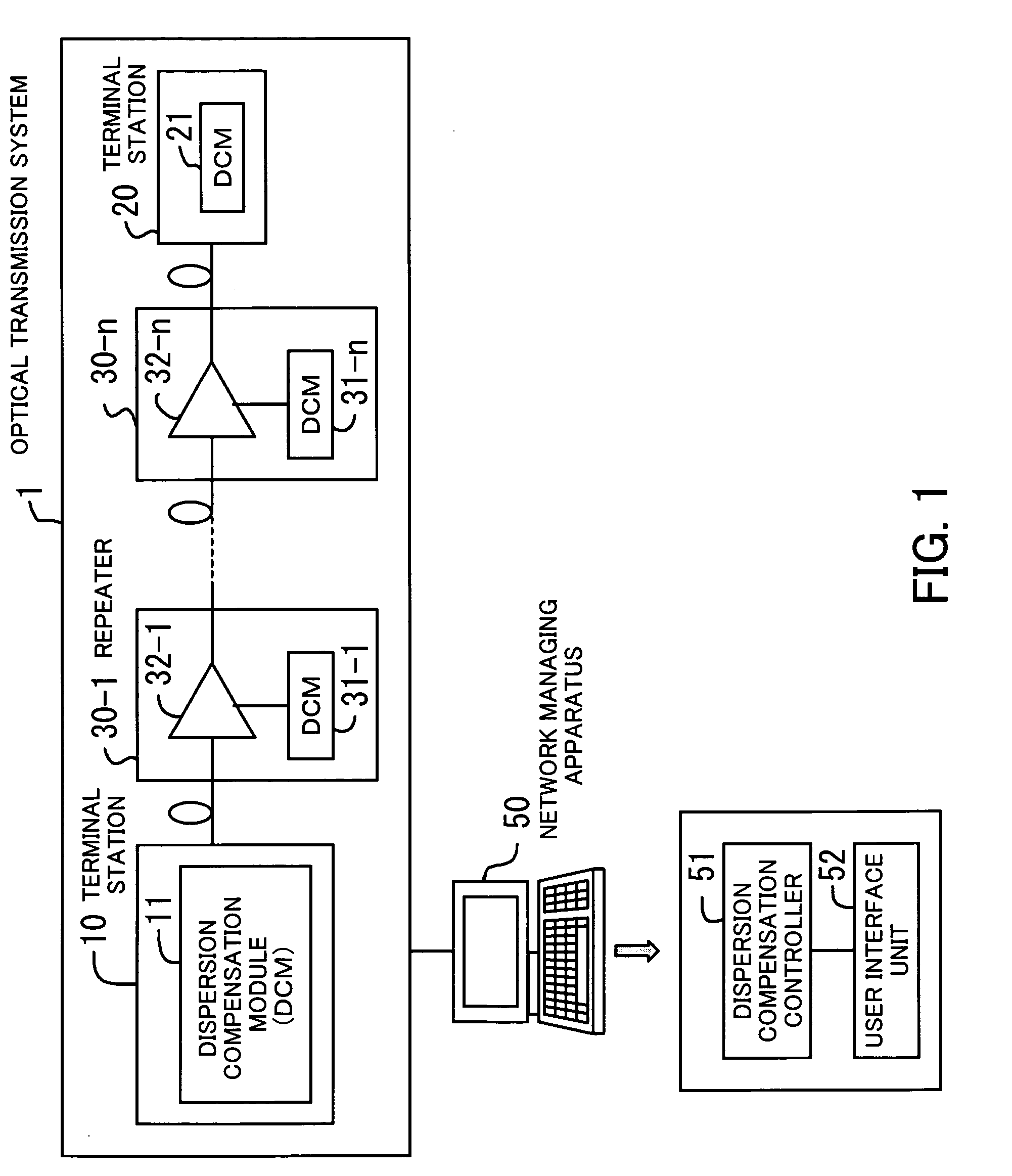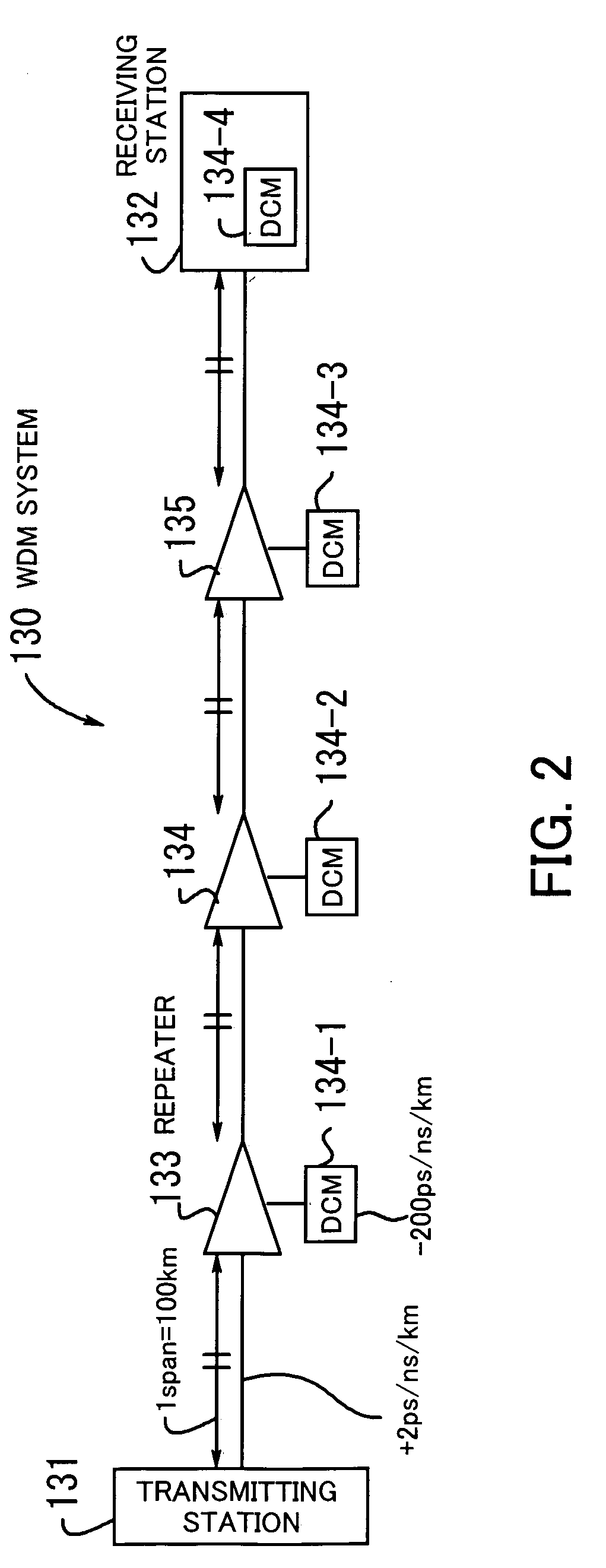Optical transmission system and method of controlling optical transmission system
a transmission system and optical transmission technology, applied in the field of optical transmission systems and a control method of optical transmission systems, can solve the problems of chromatic dispersion, greatly degraded optical signal characteristics, and deterioration of pulse waveforms, and achieve high-precision dispersion compensation and increase optical transmission quality.
- Summary
- Abstract
- Description
- Claims
- Application Information
AI Technical Summary
Benefits of technology
Problems solved by technology
Method used
Image
Examples
first embodiment
[0095]FIG. 10 shows a processing sequence according to the present invention. The illustrated processing sequence represents an operation flow of the network managing apparatus 50 which is carried out as a dispersion compensation control process for the optical transmission system 1a.
[0096] [S1] A target value φtgt for the nonlinear phase shift which maximizes the residual dispersion tolerance of the through path from terminal to terminal is determined by simulations as shown in FIGS. 7 an 8.
[0097] [S2] A nonlinear phase shift φspan,ave per span is determined according to the following equation (4): ϕ span,ave=ϕ tgtN(4)
[0098] [S3] A nonlinear phase shift of the span m is assigned to the nonlinear phase shift of the fiber transmission path and the nonlinear phase shift of the DCM according to the following equation (5):
φspan,ave=φFm+φDm (5)
[0099] [S4] If there is a limitation on the input power applied to the transmission path (e.g., if the input power applied to the transm...
second embodiment
[0105] An OSNR degradation that contributes to the overall system of each span is greater as the input level of a node next to the span is lower. If the optical amplifiers which are responsible for noise are optimized to the respective input levels, then the amount of the OSNR degradation is inversely proportional to the anti-logarithm 10ˆ(−Δpin / 10) (where Δ pin represents a variation with respect to the node input level serving as a reference) of the input level. For example, on the assumption that the loss of each span is not taken into account, if there is a span for transmitting a signal with high power over a zone having a short distance (a loss is small) or a span for transmitting a signal with low power over a zone having a long distance (a loss is large), the input levels of the next nodes are varied greatly, causing a greater OSNR degradation than if all the nodes have the same input level. the input power applied to the transmission path is set such that a signal is trans...
third embodiment
[0117] The terminal station 10 include a MUX 12 and a nonlinear generator 14. The OADM node 61 includes a DMUX 61a, a MUX 61b, and a nonlinear generator 61c (only those components required to describe the third embodiment are shown). The nonlinear generators 14, 61c are connected in each channel, and generate a certain nonlinear phase shift according to an instruction from the network managing apparatus 50.
[0118] It is assumed that a path from terminal to terminal is referred to as a path P1 (the number of spans is N), a path from the terminal station 10 to the OADM node 61 as an OADM path P2 (the number of spans is N1), and a path from the OADM node 61 to the terminal station 20 as an OADM path P3 (the number of spans is N2).
[0119]FIG. 14 shows a processing sequence according to the third embodiment of the present invention. The illustrated processing sequence represents an operation flow of the network managing apparatus 50 which is carried out as a dispersion compensation contro...
PUM
 Login to View More
Login to View More Abstract
Description
Claims
Application Information
 Login to View More
Login to View More - R&D
- Intellectual Property
- Life Sciences
- Materials
- Tech Scout
- Unparalleled Data Quality
- Higher Quality Content
- 60% Fewer Hallucinations
Browse by: Latest US Patents, China's latest patents, Technical Efficacy Thesaurus, Application Domain, Technology Topic, Popular Technical Reports.
© 2025 PatSnap. All rights reserved.Legal|Privacy policy|Modern Slavery Act Transparency Statement|Sitemap|About US| Contact US: help@patsnap.com



